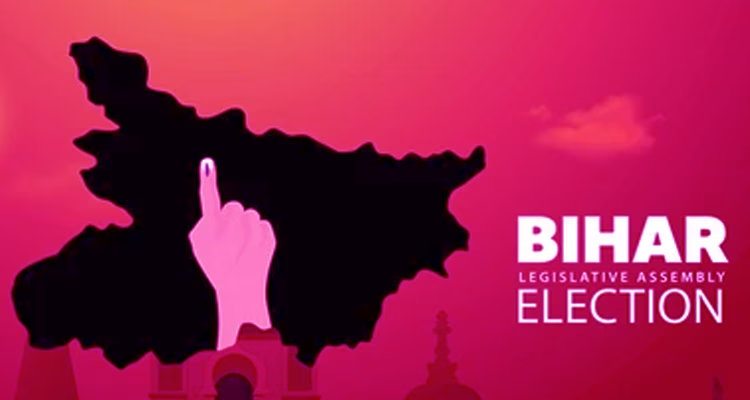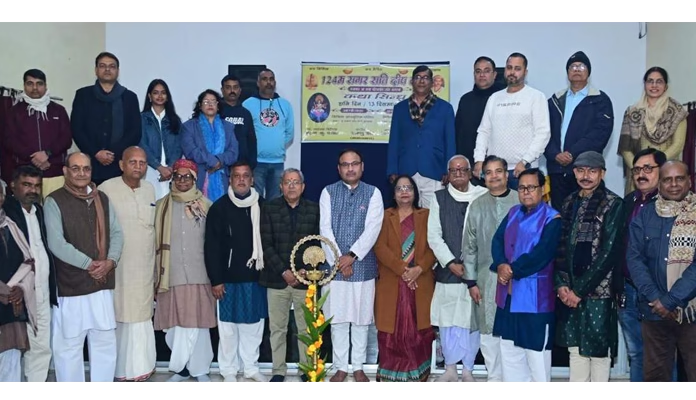 by Ajay Kumar
by Ajay Kumar
Bihar’s political temperature has hit a boiling point as the state heads into the first phase of polling on November 6, which is set to decide the immediate direction of its politics. Voting will be held in 121 constituencies across 18 districts, covering regions like Mithilanchal, Kosi, Munger, and the Bhojpur belt — areas long known for their sharp caste alignments and powerful local satraps.
This first phase is more than just the beginning of the election — it’s a decisive turning point that could lay the foundation for who governs Bihar next. Over 3.75 crore voters will determine the fate of 1,314 candidates, including 122 women, signaling growing female participation in state politics.
NDA vs Mahagathbandhan: Fractures Within Alliances
The contest remains largely between the ruling NDA and the Grand Alliance (Mahagathbandhan), but both camps face internal friction.
Within the Grand Alliance, RJD is contesting 72 seats, Congress 24, CPI(ML) 14, CPI and VIP six each, CPM three, and Indian Inclusive Party two.
On the NDA side, JD(U) has fielded candidates in 57 seats, BJP in 48, LJP (Ram Vilas) in 13, RLM in two, and HAM (Jitan Ram Manjhi’s party) in one.
Adding to the mix are Asaduddin Owaisi’s AIMIM, contesting eight seats, and Prashant Kishor’s Jan Suraj Party, which has surprisingly fielded candidates on 119 seats, promising to shake up Bihar’s entrenched political arithmetic.
Candidates and Crime: A Persistent Pattern
The shadow of crime continues to loom large over Bihar’s politics. According to the Association for Democratic Reforms (ADR), 32% of candidates in this phase face criminal charges — with 20% accused in serious cases. One in every three candidates has some form of criminal background, highlighting the long-standing nexus between power, muscle, and money in the state’s elections.
2020 Results Set the Stage
In the 2020 Assembly polls, the same 121 seats saw a razor-thin contest: the Grand Alliance bagged 61 seats, while the NDA won 59. Chirag Paswan’s LJP, which fought separately, managed just one.
Breaking it down further, RJD secured 42 seats, BJP 32, JD(U) 23, Congress eight, CPI(ML) seven, VIP four, and CPI and CPM two each. This time, RJD faces the challenge of retaining its momentum, while JD(U) and BJP are desperate to regain lost ground.
Nitish’s Acid Test
For Chief Minister Nitish Kumar, this phase is nothing short of an acid test. Of the 57 seats JD(U) is contesting, it faces direct fights with RJD on 36, Congress on 13, and CPI(ML) on seven. In 2020, 23 of JD(U)’s 43 winning MLAs came from these very constituencies. Any significant loss here could put Nitish’s political credibility — and his CM chair — on the line after two decades at the helm of Bihar’s politics.
Tejashwi’s Moment of Reckoning
For Tejashwi Yadav, this phase represents the first real step toward power. In the last election, RJD dominated Bhojpur and Saran, and Tejashwi now aims to retain those strongholds while expanding further. Contesting again from his family bastion Raghopur, his personal victory is seen as certain. But the bigger challenge is ensuring the Congress and Left parties perform better, as their underperformance last time kept him just short of a majority.
Ministers in the Line of Fire
The fate of 16 ministers from the Nitish government is also at stake — five from JD(U) and eleven from BJP.
Among key BJP names in the fray are Deputy CMs Samrat Choudhary (Tarapur) and Vijay Sinha (Lakhisarai), Health Minister Mangal Pandey (Siwan), Nitin Navin (Bankipur), Tourism Minister Raju Kumar Singh (Sahebganj), IT Minister Krishna Mantu (Amanour), and Environment Minister Sunil Kumar (Bihar Sharif).
From JD(U), Water Resources Minister Vijay Choudhary (Sarairanjan), Rural Development Minister Shravan Kumar (Nalanda), Social Welfare Minister Madan Sahni (Bahadurpur), and Information Minister Maheshwar Hazari (Kalyanpur) are in the field — all facing tough challenges.
Caste, Alliances, and the Changing Mood
Caste equations remain the backbone of Bihar’s politics, but this time the undercurrent feels different. The BJP seems increasingly less dependent on JD(U) and may benefit from anti-incumbency against Nitish Kumar. Meanwhile, Prashant Kishor’s Jan Suraj Party could disrupt traditional vote banks and fragment the vote in key regions.
Voters’ Issues: Beyond Identity
While caste and loyalty still shape Bihar’s politics, issues like unemployment, education, inflation, and law and order dominate conversations. Tejashwi is pitching youth jobs and change, while Nitish banks on his “sushasan” (good governance) image and development narrative.
What’s at Stake on November 6
This first phase will decide more than just 121 seats — it will set the tone for Bihar’s political future.
If the RJD-led alliance takes an early lead, Tejashwi’s path to power could become smoother. But if Nitish and the BJP hold their ground, the next phases will turn into a fierce showdown.
For two decades, Bihar’s politics has revolved around these two poles. Once again, Nitish and Tejashwi stand face to face — but this time, both have a lot more to lose. For Nitish, it’s about holding on to power; for Tejashwi, it’s about realizing his political dream. The people of Bihar will decide whose vision they trust to shape the state’s next five years.





